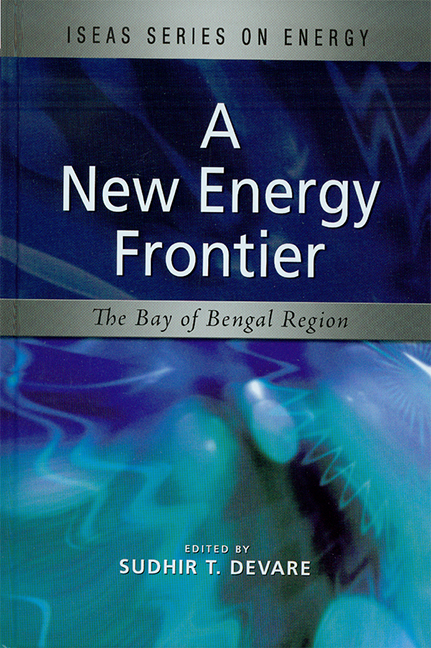Book contents
- Frontmatter
- Content
- Foreword
- Message from the Director
- Preface
- The Contributors
- 1 An Overview of the Energy Scene in the Bay of Bengal Region
- 2 Current and Expected Energy Production and Consumption within the Bay of Bengal Region: A Synopsis
- 3 Gas Potential at the Bay of Bengal and Implications for India's Energy Security
- 4 Macroeconomic Challenges for the Growth of the Energy Sector in Bangladesh in the Context of Regional Integration
- 5 Energy in the Bay of Bengal Region: Myanmar's Perspective
- 6 Marine-related Energy Resources in the Eastern Indian Ocean: Indonesian Perspective
- 7 Energy Trading and Singapore's Role as a Hub
- 8 Bay of Bengal: Awakening of a Potential Giant Area
- 9 Energy Transportation Security in the Bay of Bengal
- 10 Ethical Business Practice or Camouflage? Energy and Mining Companies and Corporate Social Responsibility
- 11 Sustainable and Renewable Energy: Scenarios for the Future
- Index
4 - Macroeconomic Challenges for the Growth of the Energy Sector in Bangladesh in the Context of Regional Integration
Published online by Cambridge University Press: 21 October 2015
- Frontmatter
- Content
- Foreword
- Message from the Director
- Preface
- The Contributors
- 1 An Overview of the Energy Scene in the Bay of Bengal Region
- 2 Current and Expected Energy Production and Consumption within the Bay of Bengal Region: A Synopsis
- 3 Gas Potential at the Bay of Bengal and Implications for India's Energy Security
- 4 Macroeconomic Challenges for the Growth of the Energy Sector in Bangladesh in the Context of Regional Integration
- 5 Energy in the Bay of Bengal Region: Myanmar's Perspective
- 6 Marine-related Energy Resources in the Eastern Indian Ocean: Indonesian Perspective
- 7 Energy Trading and Singapore's Role as a Hub
- 8 Bay of Bengal: Awakening of a Potential Giant Area
- 9 Energy Transportation Security in the Bay of Bengal
- 10 Ethical Business Practice or Camouflage? Energy and Mining Companies and Corporate Social Responsibility
- 11 Sustainable and Renewable Energy: Scenarios for the Future
- Index
Summary
Introduction
Global Outlook: Demand and Composition
Demand for energy in the developing regions, particularly in Asia has been following an upward trend. Predictions of the International Energy Agency (IEA) found that in 2030 world demand would increase by 66 per cent compared to demand in 2000. Figure 4.1 shows that Asia's contribution to the world's energy demand will increase from 20 per cent in 2000 to 27 per cent in 2030. On the other hand, demand from the Organization for Economic Cooperation and Development (OECD) countries is expected to decline from 59 per cent in 2000 to 47 per cent in 2030. It seems that over the next decades energy use will continue to grow inexorably, fossil fuels will continue to dominate the energy mix and developing countries will fast approach OECD countries as the largest consumer of commercial energy. Moreover,
world energy use would see a constant rise till 2030. During this period, global primary energy demand would increase by 1.7 per cent per year from 2000 to 2030 reaching an annual level of 15.3 billion tonnes of oil equivalent. But in order to meet this demand, huge capital flow from the industrialized nations to the developing world is required. Forecasts have also been made by the IEA that the importance of natural gas as a source of energy would substantially increase by 2030 (from 23 per cent in 2000 to 28 per cent in 2030). However oil would remain as the world's major energy source that currently occupies 38 per cent of total energy supply.
Table 4.1 portrays that according to the World Development Indicator 2006, per capita consumption of energy in the developing countries is still much lower than the developed nations. However, energy consumption in Bangladesh is not only lower compared to the developed countries, it is also below the per capita consumption of energy in other developing countries in the South Asian region. The table also depicts that energy use in all these countries remained stable and there has not been any surprise. However, energy consumption in China and Vietnam shows faster growth compared to the other developing and least developed countries.
- Type
- Chapter
- Information
- A New Energy FrontierThe Bay of Bengal Region, pp. 61 - 89Publisher: ISEAS–Yusof Ishak InstitutePrint publication year: 2008

